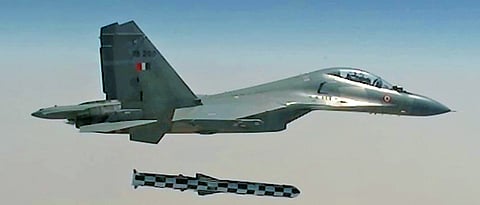

Though the government has been speaking about its ambitious ‘Make In India’ initiative and is running a campaign to make it a success, the overall impression about how this is taking shape is not too positive, to say the least.
India’s English news channel NDTV carried a report a couple of days ago in which it said that as per a report published recently, India’s weapons-buying is frequently crippled by “multiple and diffused structures with no single point accountability, multiple decision-heads, duplication of processes, delayed comments, delayed execution, no real-time monitoring, no project-based approach and a tendency to fault-find rather than to facilitate,” assesses a damning Defence Ministry report accessed by some media channels.
As a result of these flaws, the government’s flagship ‘Make in India’ initiative for the defence sector, launched in 2014, continues to languish at the altar of procedural delays and has failed to demonstrate its true potential. “The 27-point internal report prepared late last year by Minister of State for Defence Subhash Bhamre is a stinging indictment of the way the Defence Ministry functions. Of 144 deals in the last three financial years, “only 8-10 per cent fructified within the stipulated time period,” it says.
Significantly, a chart identifies how each step of the nine-stage process of ordering weaponry sees enormous delays. From the stage of Request for Proposal (RFP), when the government formally reaches out to arms manufacturers to submit their sales pitch, to the deal-closing clearance given by the Competent Financial Authority, the delays are a whopping 2.6 times to 15.4 times the deadline.
The problems begin at the level of the headquarters of the individual armed forces when the demand for new purchases is first raised.
Pointing at a ‘lack of synergy between the three services’, the report says that the Army, Air Force, Navy and Coast Guard do not work as a system, which “puts greater strain on the limited defence budget and as a result, we are unable to meet the critical capability requirements.”
What’s more, different departments of the ministry ‘appear to be working in independent silos’ driven by their interpretation of policy and procedures.
Later, once weapons purchase enters the Request for Proposal (RFP) stage, the average time taken to clear files is 120 weeks - six times more than rules laid down by the ministry in 2016. “The fastest RFP clearance was accorded in 17 weeks while the slowest took a monumental 422 weeks (over eight years),” the report noted.
The report points out that the Armed Forces, as eventual users of the weapon systems, “continue to view the Acquisition Wing (of the Defence Ministry) as an obstacle rather than a facilitator.” So there needs to be a “tectonic change in the mindset of the ministry officials and the need of the hour is assigning responsibility and accountability.”
At the level of Trials and Evaluation conducted by the Armed Forces, “the average time taken is 89 weeks, which is three times more than authorised.” The armed forces are a part of the problem here, as they list “ambiguous trial directives, leaving scope for varied interpretation.”
Dr Bhamre says in his report that the Technical Oversight Committee (TOC) stage needs to be done away with altogether. “I am not sure whether any TOC has brought up any relevant issue and is assessed to be yet another delay in the procurement procedure.”
The situation has now raised an alarm all across the government and obviously, some detailed clarifications and action is expected.
